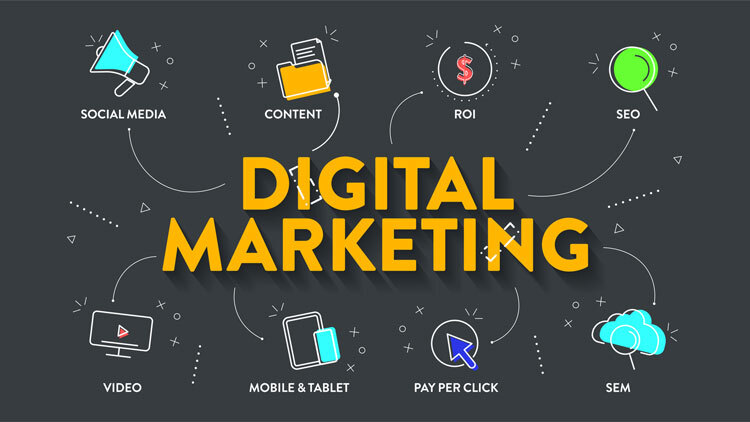In a digital world flooded with metrics, dashboards, and performance reports, it’s easy to get swept away by numbers that look impressive on the surface but offer little strategic value. While likes, follows, and impressions might inflate egos, they rarely tell the full story about your digital marketing ROI. To truly grow your business, you need to focus on what really matters: conversions and revenue.
In this article, we dive deep into the metrics that genuinely impact business growth, explain attribution models that help you understand what’s driving those results, and explore tools that turn raw data into strategic decisions.
Beyond Vanity Metrics: Identifying KPIs That Impact Revenue
Many businesses still fall into the trap of measuring success by how many people liked their latest Instagram post or how many new followers they gained in a week. These are vanity metrics — numbers that look good but don’t necessarily correlate with business goals.
So what should you be measuring instead?
Shift the Focus to Performance Metrics
The ultimate goal of digital marketing is not awareness alone—it’s action. Your real performance indicators are metrics that reflect a clear user journey from engagement to conversion. These include:
- Conversion Rate (CR): Measures how many users completed a desired action (purchase, form submission, download) out of the total visitors. A better indicator of campaign effectiveness than just traffic volume.
- Cost Per Acquisition (CPA): Tells you how much it costs to acquire one customer. This helps in evaluating marketing efficiency and profit margins.
- Customer Lifetime Value (CLV or LTV): Goes beyond the immediate sale to measure how much a customer is worth over the long run. Great for assessing retention strategies and upselling efforts.
- Return on Ad Spend (ROAS): Tells you how much revenue you earn for every dollar spent on advertising. It’s the clearest view of digital marketing profitability.
- Sales-qualified Leads (SQLs): Unlike just lead volume, SQLs represent leads that are actually ready for the sales team—signaling true quality over quantity.
- Churn Rate: Important for subscription-based models; this tells you how many customers are leaving, which can undermine all your acquisition efforts.
Match KPIs to Funnel Stages
Not all KPIs are relevant at all times. Understanding the marketing funnel can help you apply the right KPIs at the right stage:
- Top of Funnel (TOFU): Focus on metrics like CTR, bounce rate, and engagement—but only as leading indicators.
- Middle of Funnel (MOFU): Track downloads, email opens, or webinar registrations—actions that suggest interest.
- Bottom of Funnel (BOFU): Prioritize SQLs, conversion rate, CPA, and ultimately closed sales.
When metrics are aligned to specific stages in the buyer journey, they can tell a more accurate story about what’s working—and what isn’t.
Attribution Models Explained: Tracking the True Source of ROI
One of the most complex—and misunderstood—challenges in digital marketing is attribution: determining which touchpoints actually lead to a conversion. Without proper attribution, you’re flying blind, investing in campaigns that may have little to no impact on sales.
Stuck with Digital Marketing? We’ll Fix That.
Work with a team that knows what works—and what doesn’t.
Get StartedWhy Attribution Matters
Imagine a customer sees a Facebook ad, clicks a Google search result the next day, signs up for an email offer, and finally makes a purchase after clicking a retargeting ad. Which channel gets the credit?
The answer depends on your attribution model, and each model tells a different version of the truth.
Common Attribution Models
- First-Touch Attribution:
- Credit goes to the first interaction a user has with your brand.
- Pros: Great for understanding how customers discover you.
- Cons: Ignores all the nurturing steps that follow.
- Last-Touch Attribution:
- Credit is assigned to the final interaction before conversion.
- Pros: Easy to implement and useful for understanding closing tactics.
- Cons: Overlooks the role of awareness and nurturing efforts.
- Linear Attribution:
- Spreads credit equally across all touchpoints.
- Pros: Recognizes that multiple interactions contribute to a sale.
- Cons: Not all touchpoints are equally influential.
- Time Decay Attribution:
- Assigns more weight to recent interactions, while earlier ones get less credit.
- Pros: More realistic for long buying cycles.
- Cons: May undervalue brand awareness efforts.
- Position-Based (U-Shaped) Attribution:
- Gives 40% credit to the first and last touch, and splits the remaining 20% among the middle interactions.
- Pros: Balances discovery and conversion points well.
- Cons: Can be complex to calculate manually.
- Data-Driven Attribution:
- Uses AI and statistical models to determine what matters most based on real user behavior.
- Pros: Most accurate if done right.
- Cons: Requires significant data and often a premium analytics setup.
Choosing the Right Model
There’s no one-size-fits-all. Your attribution model should reflect:
- The length of your sales cycle
- The number of channels involved
- Your conversion goals
Start simple, test frequently, and evolve your model as your marketing matures.
Tools and Dashboards That Turn Data into Decisions
You can’t manage what you don’t measure—but even worse is measuring everything and understanding nothing. This is where tools and dashboards come in, helping marketers transform raw data into actionable insights.
Popular Analytics Tools
- Google Analytics 4 (GA4):
- Offers event-based tracking across devices and platforms.
- Better at attribution than its predecessor (Universal Analytics).
- Integrates well with Google Ads, Search Console, and Data Studio.
- HubSpot:
- All-in-one CRM with powerful reporting for email, social, lead nurturing, and sales.
- Great for visualizing lead scoring and customer journeys.
- Adobe Analytics:
- Enterprise-level tool with advanced segmentation and AI-powered insights.
- Offers deep personalization and predictive modeling.
- Hotjar / Microsoft Clarity:
- Provides qualitative insights through heatmaps, session replays, and funnel analysis.
- Helpful for identifying UX barriers to conversion.
- Tableau / Power BI / Looker:
- Data visualization tools that can aggregate data from multiple platforms.
- Ideal for building C-suite level dashboards that track KPIs in real-time.
- CallRail / WhatConverts / Ruler Analytics:
- Help attribute calls, forms, and offline conversions back to digital campaigns.
- Critical for service-based or hybrid offline-online businesses.
Key Dashboard Best Practices
- Limit your KPIs: Focus on 5–10 high-impact metrics. Too many numbers create confusion.
- Automate Reporting: Use live dashboards that pull data from APIs or cloud connectors. This saves time and ensures decisions are based on the latest data.
- Segment Your Data: Break down performance by campaign, channel, device, and audience.
- Set Benchmarks: Track progress over time and against industry averages.
- Make it Visual: Use charts, heatmaps, and funnel visualizations for better clarity and faster decisions.
Final Thoughts: What Gets Measured Gets Improved
Clicks might signal attention, but conversions signal intent and value. As digital marketers, it’s time to move away from superficial success metrics and focus on what drives real business results. That means:
- Choosing KPIs that reflect bottom-line impact
- Understanding the user journey through attribution modeling
- Leveraging the right tools to visualize and act on data
When your strategy is grounded in the right measurements, you’re not just doing digital marketing—you’re making data-driven decisions that grow your business.
Ready to turn more clicks into real business results? Call us at +91 77604 87777 or reach out via our contact form—we’ll get back to you promptly. Let’s build a data-driven digital marketing strategy focused on the metrics that truly matter: engagement, conversions, and ROI.



